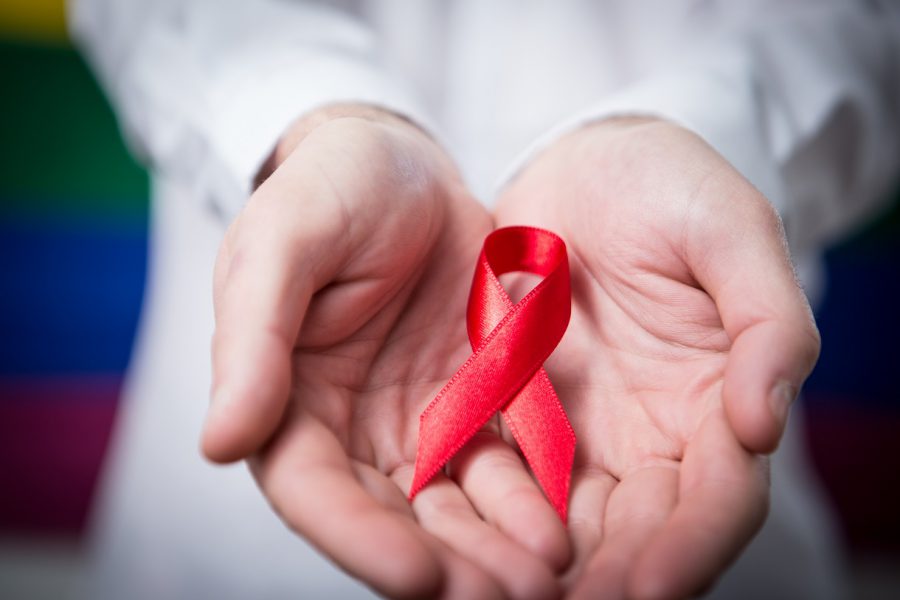
The stigma’s diminishing, but Lisa Toahty still sees it some.
A public health prevention specialist with Oklahoma City Indian Clinic, Toahty is a frequent sight at area health fairs, armed with pamphlets and information about sexually transmitted diseases, including HIV and AIDS.
Depending on the location, just putting out information on the latter still elicits eye rolls, snickers and disapproving glances.
“I do get blown off at some of the fairs in more rural areas,” she said. “But it’s interesting: I’ll have people go by with their friends or family, see the materials and keep moving. Then when their friends or family aren’t looking, they circle back around and grab the pamphlets.
“Just getting out there, being at things, makes it a little more acceptable. I do feel like people are getting more open to it than they used to be, but there are still a lot of people who feel like just getting the information will put out a bad vibe.”
Despite that occasional side eye, resources remain readily available for HIV and AIDS patients not only across Indian Country but internationally as well.
Since 1988, Dec. 1 has been designated as World AIDS Day as a way to remember those killed by the disease and show support for people living with it.
Worldwide, an estimated 36.7 million people are living with HIV or AIDS. More than 2.1 million new cases are diagnosed each year.
Despite not being identified until 1984, the virus has killed more than 35 million people, with an estimated 1 million direct casualties annually.
According to Centers for Disease Control and Prevention data, American Indians and Alaska Natives accounted for 1 percent of all new HIV and AIDS diagnoses in 2015, the most recent year for which statistics are available.
Compared to other racial and ethnic groups, the rate of HIV and AIDS infection in Indian Country is lower than that of Hispanics, Native Hawaiians, Pacific Islanders and blacks, but higher than whites.
Additionally, Indian Health Services estimates that up to 26 percent of all HIV-positive American Indian and Alaska Natives do not know that they are infected. Furthermore, the infection rate is thought to be underreported among American Indians and Alaska Natives due to racial misidentification.
According to 2015 Oklahoma Department of Health data, 5.9 percent of HIV and AIDS patients statewide are Native American, with men accounting for more than half of the cases.
“It might not seem like a whole lot, but when you consider the size of the population, those are kind of staggering numbers,” Toahty said. “Everyone feels that it is underreported and with misclassification on race, it’s hard to know what those numbers really are.”
To help lower that rate and eliminate the stigma associated with an HIV or AIDS diagnosis, OKCIC now offers universal HIV testing for all patients aged 13 and older. The Oklahoma City metropolitan area accounts for 49.1 percent of all HIV and AIDS living cases statewide, with 2,197 in Oklahoma County alone.
“A lot of people don’t like to admit they have a risk,” Toahty said. “Some just don’t even realize that they have one. I don’t know how many people I’ve talked to who had no clue that they had any risk.
“You only know what you do. You have no clue what someone else does. Some people just don’t really see themselves as having a risk.”
Patients who test positive are referred to partner agencies in the Oklahoma City metro area for services, including the Ryan White early intervention program at the University of Oklahoma Health Sciences Center.
The push for additional testing is also showing up around Shawnee, with both of the Citizen Potawatomi Nation’s clinics offering the service to tribal citizens, employees and area residents who are enrolled with a federally recognized tribe. Counseling services and contract health referrals are available for patients who test positive and are
not sure what to do next.
“The hardest step is to just walk in,” said CPN Health Services’ Glenna Stumblingbear-Riddle. “People often say they’re nervous about it, but once they take that step, they see we provide good services, and often say they wish they had come in sooner.”
